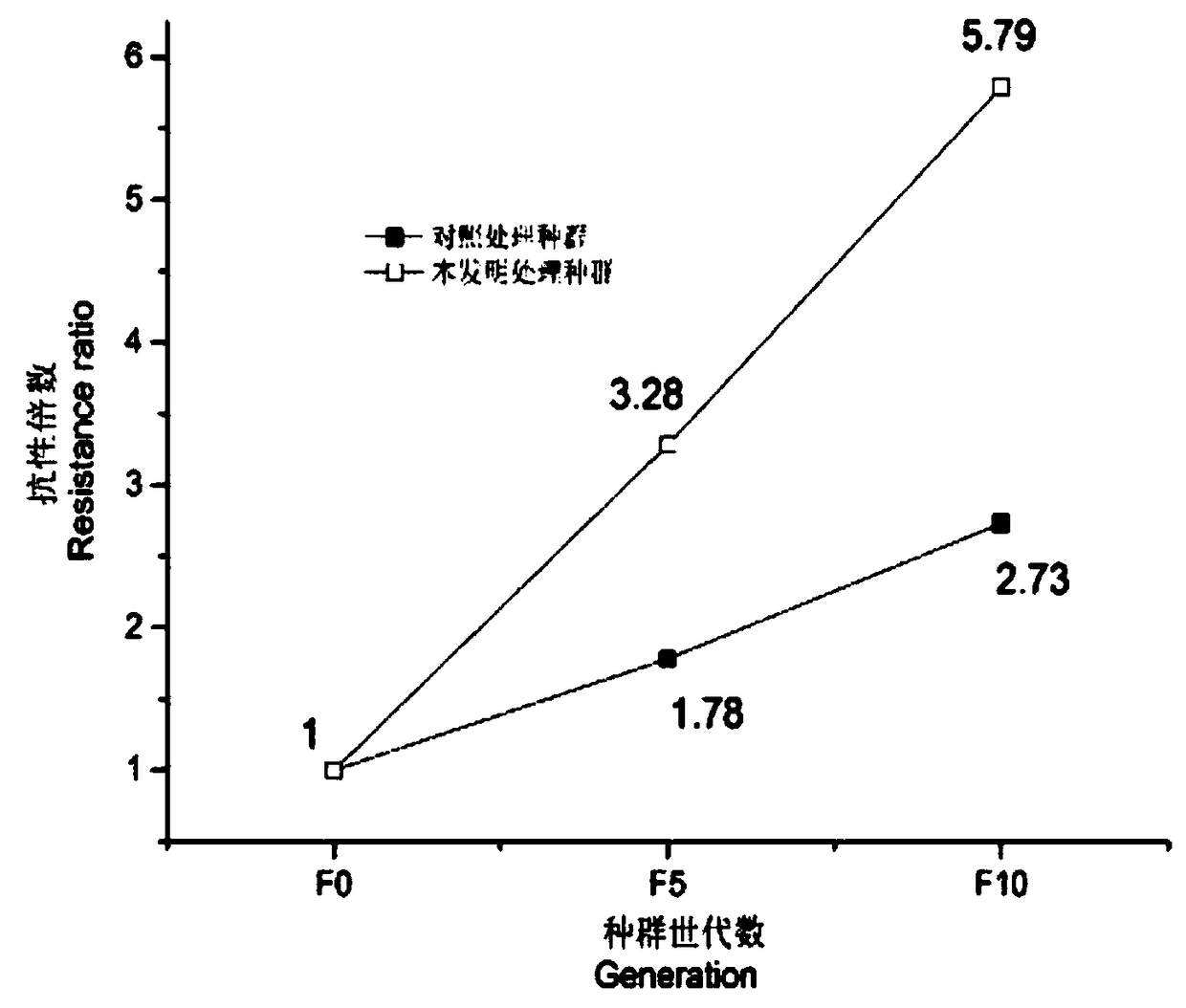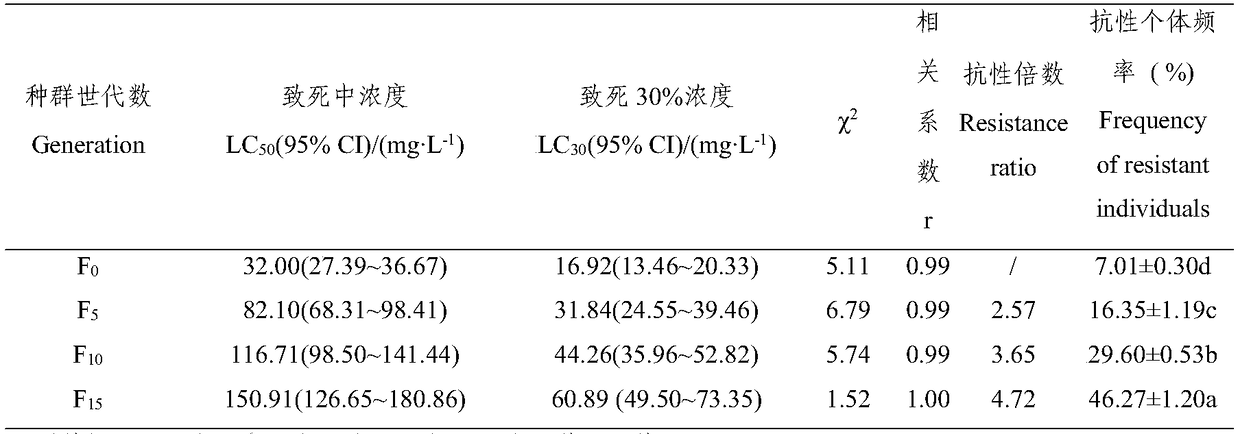A method of cultivating a population of drug-resistant Cocoa beetle wasps
A technology of beetle beetle and coconut leaf, which is applied to the cultivation of drug-resistant population of beetle beetle and the field of cultivation of beetle beetle, which can solve the lethal effect and affect the long-term sustainable reproduction of parasitic bee wild populations, parasitic bee Harm and other issues, achieve the effect of high resistant individual frequency, satisfying rapid multiplication, and improving survival probability
- Summary
- Abstract
- Description
- Claims
- Application Information
AI Technical Summary
Problems solved by technology
Method used
Image
Examples
Embodiment 1
[0031] The cultivation of the anti-abamectin population of embodiment 1 Coconut leaf beetle
[0032]A large number of expanded and multiplied populations of the cocoa beetle preserved by the Institute of Environment and Plant Protection of the Chinese Academy of Tropical Agricultural Sciences were used as the initial population, and the above-mentioned cultivation method was followed. Regularly use abamectin to treat the test insects, form the selection pressure of the agent, and carry out subculture. With lethal 30% concentration, update the selection concentration every 5 generations, that is, F 0 to F 4 LC 30 16.92mg·L -1 , F 5 to F 9 LC 30 31.84mg·L -1 , F 10 to F 14 the LC 30 44.26mg·L -1 , carry out resistance cultivation by the above-mentioned direct contact method of adult bees and indirect contact method of young bees respectively, resistance multiple = LC of the test population before cultivation 50 / LC of the reared population 50 , to LC 50 Whether the...
Embodiment 2
[0038] The cultivation of the anti-beta-cypermethrin population of embodiment two Coconut leaf beetles
[0039] A large number of expanded and multiplied populations of the cocoa beetle preserved by the Institute of Environment and Plant Protection of the Chinese Academy of Tropical Agricultural Sciences were used as the initial population, and the above-mentioned cultivation method was also followed. Regularly use beta-cypermethrin to treat the test insects, form the pressure of drug selection, and carry out subculture. With a lethal 20% concentration, the selection concentration is updated every 5 generations, that is, F 0 to F 4 LC 20 1.17mg·L -1 , F 5 to F 9 LC 20 2.1mg·L -1 , F 10 to F 14 LC 20 3.08mg·L -1 , F 15 to F 19 LC 20 4.8mg·L -1 , carry out resistance cultivation by the above-mentioned direct contact method of adult bees and indirect contact method of young bees respectively, resistance multiple = LC of the test population before cultivation 50 / L...
Embodiment 3
[0044] Embodiment 3 Cultivation of acetamiprid-resistant populations of the coconut-heart beetle beetle
[0045] A large number of expanded and multiplied populations of the cocoa beetles preserved by the Institute of Environment and Plant Protection of the Chinese Academy of Tropical Agricultural Sciences are used as the initial population, and the cultivation method of the present invention is also used. Regularly use acetamiprid to treat the parasitic wasps, form the selection pressure of the agent, and carry out subculture. With lethal 30% concentration, update the selection concentration every 5 generations, that is, F 0 to F 4 LC 30 5.58mg·L -1 , F 5 to F 9 LC 30 21.66mg·L -1 , F 10 to F 14 LC 30 31.11mg·L -1 , the above-mentioned adult bee direct contact method and young bee indirect contact method respectively carry out resistance cultivation, resistance multiple = LC of the test population before cultivation 50 / LC of the reared population 50 , to LC 50 ...
PUM
 Login to View More
Login to View More Abstract
Description
Claims
Application Information
 Login to View More
Login to View More - R&D
- Intellectual Property
- Life Sciences
- Materials
- Tech Scout
- Unparalleled Data Quality
- Higher Quality Content
- 60% Fewer Hallucinations
Browse by: Latest US Patents, China's latest patents, Technical Efficacy Thesaurus, Application Domain, Technology Topic, Popular Technical Reports.
© 2025 PatSnap. All rights reserved.Legal|Privacy policy|Modern Slavery Act Transparency Statement|Sitemap|About US| Contact US: help@patsnap.com



